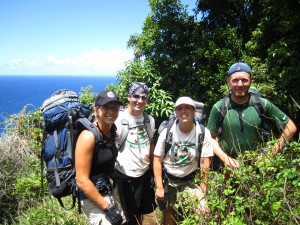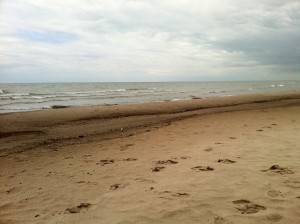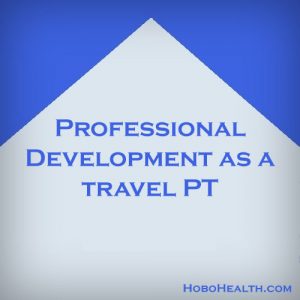Firts, let me first start with 2 (two) apologies:
1. I apologize for writing so sporadically. I’m getting married next month and promise to be more consistent in August.

We passed this couple while hiking on the N Shore of Kaua’i. She was wearing the same shirt as me from Jack Quinn’s Running Club who we used to run with in Colorado Springs.
2. Sorry the comments don’t work on the blog. In addition, if you click around, you’ll find the entire blog portion of this site acts funky. If you wondering why I haven’t fixed this already, please see apology number 1 (one).
On we go:
I do like running in different places. I especially like finding a body of water on vacation (lake, ocean, river, irrigation ditch) and running along side it. While running on assignment, I learn my way around the neighborhoods I live in and see interesting things along the way. On a recent wrong turn that took me 6 miles out of my way, I realized how quickly I could get into vast farmlands and have beautiful valley views (it didn’t seem so close on the way home). I also got an up close look at a roadkilled-porcupine. The porcupine was pretty interesting, but more than I had bargained for.
The last time I went running a small happening that I think most runners can identify with inspired the creation of a new predictive rule for the field of psychology. So, the moment you have all anticipate, my first independently developed objective measurement tool:
The Spencer Societal Startle Test (SSST)
The subject should be sent out for a casual walk on a public street. The investigator should dress as a recreational jogger and begin running from a distance behind the subject. As the investigator approaches the subject from the rear, a cough and foot shuffle should be performed at a distance of 20 ft to alert the subject of an approaching person. The investigator should continue to run alongside and past the subject.
Scoring: Score 1 (one) if the subject yells out audibly in surprise. Score 0 (null) if there is no audible reaction. A score of 1 indicates the subject will likely benefit from professional psycological intervention.
Clinicians interested in studying the SSST should note that it should be expected that the test will have strong specificity, but fairly poor sensitivity. Meaning, a high percentage of subjects who test positive under the SSST will benefit from psychological counseling, however, a negative score may not truley indicate that a subject would not benefit from psychological counseling.
Enjoy the open road…. some day I’ll write about this whole barefoot/forefoot running thing, it’s really been driving me nuts.
James
—
James R Spencer, PT, DPT, OCS, CSCS
Current location: Skowhegan, ME



 I don’t mean to say that an immediate new grad can’t travel, it just takes the right person who is willing to self-motivate and work that extra bit to find the professional expansion they need. My first travel assignment was perfect. It was in a community hospital with a steady staff and a solid director. I had the infrastructure around me where I could ask questions and work towards answers with my co-workers’ help. Ultimately, I found the mentorship I needed to grow. Because of the mentorship and support, I extended my contract there several times, a total of 10 months on my first travel assignment (longer than the “permanent” job I worked before traveling).
I don’t mean to say that an immediate new grad can’t travel, it just takes the right person who is willing to self-motivate and work that extra bit to find the professional expansion they need. My first travel assignment was perfect. It was in a community hospital with a steady staff and a solid director. I had the infrastructure around me where I could ask questions and work towards answers with my co-workers’ help. Ultimately, I found the mentorship I needed to grow. Because of the mentorship and support, I extended my contract there several times, a total of 10 months on my first travel assignment (longer than the “permanent” job I worked before traveling).